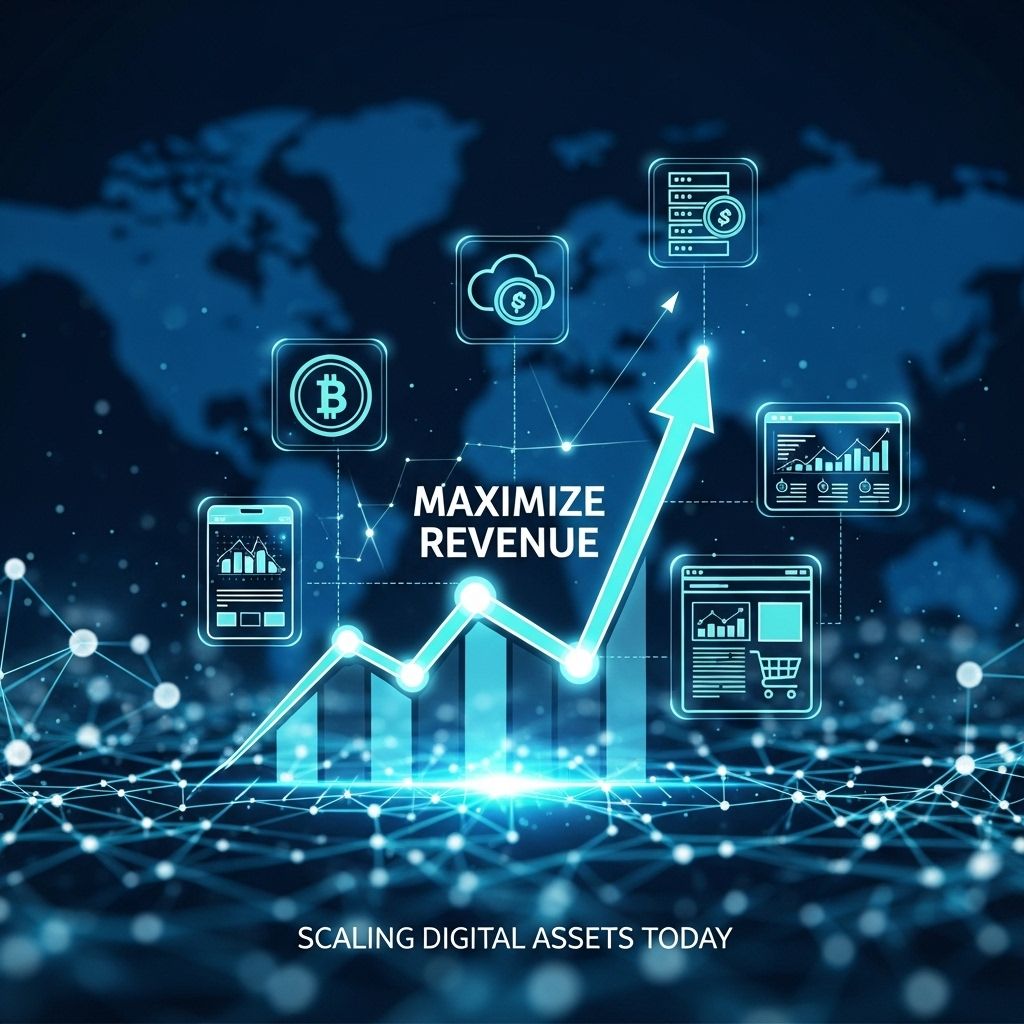As we move closer to 2025, the landscape of digital assets continues to evolve rapidly. Companies and individuals must adapt to these changes to thrive in an ever-competitive environment. Whether you’re managing cryptocurrencies, digital marketing strategies, or e-commerce platforms, understanding how to scale your digital assets effectively is paramount for success. In this article, we’ll delve into strategies, tools, and best practices to help you maximize your digital assets for the future.
Understanding Digital Assets
Digital assets refer to any content or resource that exists in a digital format and has value. This includes, but is not limited to:
- Cryptocurrencies (e.g., Bitcoin, Ethereum)
- Digital marketing content (e.g., blogs, videos, infographics)
- E-commerce products
- Intellectual property (e.g., patents, copyrights)
- Digital real estate (e.g., domain names, websites)
The Importance of Scaling Digital Assets
Scaling your digital assets is crucial for several reasons:
- Increased Reach: A well-managed digital asset can reach a broader audience.
- Revenue Growth: Scaling leads to higher sales, subscription rates, or advertising revenue.
- Competitive Advantage: Keeping pace with or outpacing competitors requires effective scaling.
- Adaptability: Scaled assets can adapt to market changes more readily.
Strategies for Scaling Digital Assets
1. Invest in Technology
Utilizing the right technology is essential for scaling your digital assets. Here are a few technologies to consider:
| Technology | Purpose | Examples |
|---|---|---|
| Content Management Systems | To manage and publish digital content efficiently | WordPress, HubSpot |
| E-commerce Platforms | To sell products effectively online | Shopify, WooCommerce |
| Marketing Automation Tools | To automate marketing tasks and improve lead generation | Mailchimp, HubSpot |
| Analytics Tools | To track and analyze performance metrics | Google Analytics, SEMrush |
2. Optimize Your Digital Marketing
Digital marketing plays a crucial role in scaling your digital assets. Here are some key practices:
- SEO (Search Engine Optimization): Implement on-page and off-page SEO strategies to improve your visibility in search engines.
- Content Marketing: Create valuable, engaging content that attracts and retains customers.
- Social Media Marketing: Leverage various platforms to connect with your audience and drive traffic.
- Email Marketing: Build a list and communicate directly with your audience.
3. Diversification of Assets
Relying on a single digital asset can be risky. Diversifying your portfolio of digital assets can mitigate this risk. Here are some types of assets you might consider:
- Cryptocurrency Investments: Allocate a portion of your portfolio to multiple cryptocurrencies.
- Creating Multiple Income Streams: Consider affiliate marketing, online courses, or consulting services.
- Investing in Digital Real Estate: Buy and manage numerous domain names or websites.
4. Focus on User Experience
Your digital assets should provide an excellent user experience. Here are some recommendations:
- Ensure your website is mobile-friendly and responsive.
- Optimize page load speeds.
- Use clear, engaging visuals and easy-to-read fonts.
- Streamline navigation to make finding information easier.
Emerging Trends to Watch
1. Blockchain Technology
The rise of blockchain technology offers new opportunities for securing and managing digital assets. Understanding how to leverage blockchain can provide your digital assets with enhanced security and transparency.
2. AI and Machine Learning
AI and machine learning can optimize many aspects of scaling digital assets, from customer service chatbots to predictive analytics for better targeting in marketing.
3. Augmented and Virtual Reality
AR and VR technologies are revolutionizing how consumers interact with digital products, offering immersive experiences that can lead to higher engagement and sales.
Measuring Success
To gauge the success of your scaling efforts, consider tracking the following metrics:
- Traffic Growth: Monitor the increase in visitors to your website or online platforms.
- Engagement Rates: Track likes, shares, comments, and other forms of interaction.
- Conversion Rates: Measure how many visitors turn into customers or leads.
- Return on Investment (ROI): Analyze the profitability of your scaling initiatives.
Conclusion
As we approach 2025, the need to scale digital assets is more critical than ever. By investing in technology, optimizing marketing strategies, diversifying assets, focusing on user experience, and staying ahead of emerging trends, you can set yourself up for success. Start implementing these strategies today, and you’ll be well-positioned to adapt and thrive in the future landscape of digital assets.
FAQ
What are digital assets and why are they important for business success in 2025?
Digital assets include online content, social media profiles, websites, and digital products. They are crucial for business success in 2025 as they enhance brand visibility, engage customers, and drive sales.
How can I effectively scale my digital assets for better performance?
To scale your digital assets, focus on optimizing your content for SEO, leveraging social media marketing, and utilizing data analytics to understand audience behavior and preferences.
What role does SEO play in scaling digital assets?
SEO is essential for scaling digital assets as it improves search engine visibility, driving more organic traffic to your website and increasing the chances of conversion.
What strategies should I implement to prepare my digital assets for 2025 trends?
Stay updated on emerging technologies, focus on mobile optimization, enhance user experience, and incorporate AI-driven tools to streamline processes and engage audiences effectively.
How can I measure the success of my scaled digital assets?
You can measure success through key performance indicators (KPIs) such as website traffic, social media engagement, conversion rates, and overall return on investment (ROI) for your marketing efforts.




